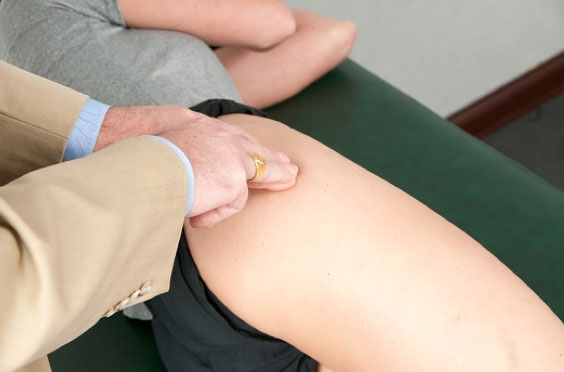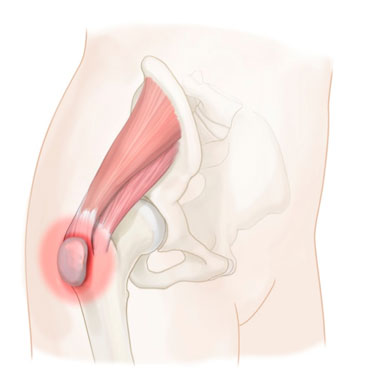Laterally based hip pain is often blamed on trochanteric bursitis. This is characterized by tenderness over the outside edge of the hip area. Typically, this is associated with pain when trying to lie on the side. Often, it is not clear whether this is really inflammation in the bursa (“bursitis”) or other non-specific soft tissue inflammation with similar characteristics. Either way, most of these respond well to simple treatment, ranging from activity modification, supervised physical therapy, nonsteroidal anti-inflammatory medication and, occasionally, a well-placed cortisone injection.
Numerous problems can create this laterally based pain, ranging from soft tissue inflammation to structural damage of the abductor tendons (gluteus medius & minimus). Thus, the term greater trochanteric pain syndrome (GTPS) was coined to describe the constellation of problems that can present as laterally based pain. GTPS is a more accurate description than bursitis, which is only sometimes the cause.
What is the Trochanteric Bursa?
A bursa is a membranous sac containing a thin film of fluid. The interior of the sac is lined with synovial membrane which produces this thin fluid film (synovial fluid). Synovium also lines the interior of joint capsules and produces the synovial fluid that lubricates joints. A bursa forms to prevent friction where a tendon or skin (there is a bursa under the skin on the back of your elbow) rubs across bone. There are actually 13 different bursae around the hip, but the Trochanteric Bursa is the largest. It lays between the Iliotibial Band (IT Band) and the Greater Trochanter. The IT Band is a broad superficial tendon along the outer side of the hip and the Greater Trochanter is the bony prominence that you can feel on along the side of your hip. The bursa prevents friction as the undersurface of the IT Band glides back and forth across the Greater Trochanter.
What is Trochanteric Bursitis?
Bursitis is inflammation of the Bursa. This is characterized by pain with localized tenderness to touch and an increased amount of fluid within the bursa. The extra fluid within the Trochanteric Bursa is not something that you can usually see, because it is deeply situated within the soft tissues. Bursitis can occur for numerous reasons, including: Trauma from a direct blow; repetitive overuse; altered mechanics of the way structures work around the joint, resulting in abnormal stresses from normal activities; and some people are just more susceptible to inflammatory problems.
Location
2004 Hayes Street
Suite 700
Nashville, TN 37203
Office Hours
Monday-Friday:
8:00 am – 5:00 pm


